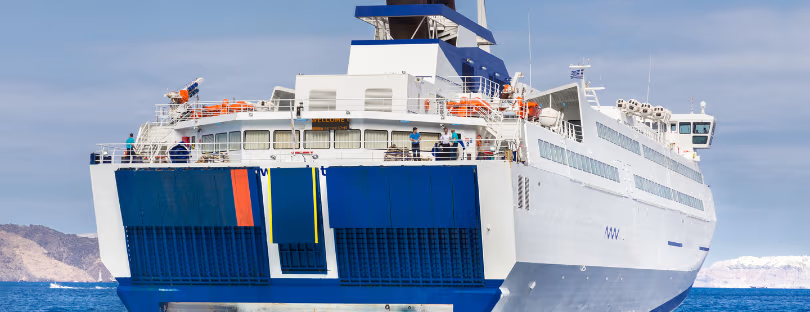
KPN Becomes First Dutch Operator to Offer “Roam Like Home” in the North Sea
Starting November 1, KPN is extending its Roam Like Home benefits far beyond the coastline—literally. From next week, KPN customers can call, text, and use mobile data in the North Sea at the same rates as they do on land. That means no more sky-high roaming charges for offshore connectivity. Competitor Odido made a comparable announcement last month, with the new rates coming into effect on January 1.
This milestone makes KPN—along with its sub-brands Simyo and Youfone—the first Dutch telecom operator to integrate the North Sea into its standard EU roaming zone. It’s a move that signals both a customer win and a strategic leap in offshore communications.
Breaking the Cost Barrier at Sea
Since 2017, EU regulations have allowed mobile users to “roam like at home,” meaning travelers across EU member states pay the same rates for calls, texts, and data as they do domestically. But one region remained stubbornly outside those borders: the North Sea.
Until now, anyone at sea—whether on a ferry, a cargo ship, or an offshore wind platform—risked hefty charges if their phone connected to a maritime network. Roaming at sea typically relied on satellite or specialized offshore providers, with costs running into several euros per megabyte.
KPN’s new agreement with Tampnet, a Norwegian-based provider specializing in mobile offshore connectivity, changes that. Tampnet operates one of the world’s largest offshore 4G networks, covering the North Sea’s oil platforms, wind farms, and shipping routes. Through this partnership, KPN customers can now seamlessly access Tampnet’s network without paying premium roaming fees.
Why It Matters—Especially for Offshore Workers
For the average holidaymaker, this might sound like a small perk. But for the thousands of Dutch offshore workers who spend weeks on platforms or ships, it’s transformative.
Reliable and affordable mobile connectivity means staying in touch with family without worrying about surprise bills. It also opens the door for better safety, faster coordination, and smoother communication in one of Europe’s busiest offshore regions.
In an increasingly digital offshore economy—where energy production, logistics, and environmental monitoring depend on real-time data—this step positions KPN as a true connectivity enabler for the North Sea.
A Boost for Innovation at Sea
The renewed KPN–Tampnet partnership goes far beyond lowering roaming costs. It’s also an enabler for the next wave of offshore innovation.
Seamless mobile integration between land and sea networks allows companies to develop smarter, more connected systems. Think of:
- Drones performing automatic wind turbine inspections and transmitting live video over 4G.
- Autonomous vessels relaying real-time navigation and performance data back to shore.
- IoT-enabled monitoring systems track environmental conditions or equipment performance on offshore sites.
Until now, these applications were often limited by connectivity costs or technical incompatibilities between land-based and offshore networks. By harmonizing roaming between KPN and Tampnet, those barriers are rapidly disappearing.
As KPN explains, this initiative supports its broader vision for “smart and efficient innovations in the offshore sector” — a statement that aligns with growing European ambitions for connected, sustainable energy ecosystems in the North Sea.
What This Means for the Telecom Market
KPN’s move is more than a technical milestone; it’s a strategic statement. European operators have long sought to differentiate themselves by expanding roaming advantages.
- Vodafone, for instance, offers extended maritime coverage through its Maritime Connect initiative, but roaming at sea still comes with additional costs for most users.
- Deutsche Telekom has launched similar offshore solutions, primarily targeting enterprise clients rather than retail consumers.
- Telenor—which partly owns Tampnet—remains one of the few operators with deep offshore expertise, but its coverage model has yet to include consumer-level “roam like home” integration.
By making offshore roaming cost-neutral for all customers, KPN has effectively blurred the boundary between land-based and maritime mobile coverage. It’s a customer-friendly innovation — but also a competitive signal to other European telcos to rethink their approach to remote area connectivity.
The Bigger Picture: Connectivity Beyond Borders
This move fits into a broader trend where telecom infrastructure extends into new frontiers — oceans, skies, and even space. Projects like SpaceX’s Starlink Maritime, OneWeb’s enterprise broadband, and European satellite initiatives under IRIS² all share one goal: seamless global connectivity.
But while satellite broadband grabs headlines, KPN’s North Sea initiative shows the power of leveraging existing terrestrial partnerships for practical, affordable, real-world coverage. It’s not about replacing networks — it’s about extending them intelligently.
And that’s exactly where the future of connectivity lies: hybrid ecosystems where mobile, offshore, and satellite networks work together to keep people and industries connected wherever they operate.
A Defining Step for Dutch Connectivity
With this North Sea expansion, KPN has once again positioned itself at the forefront of telecom innovation—not by launching something flashy, but by solving a genuine problem that’s been ignored for years.
By removing the roaming cost barrier at sea, KPN is:
- Empowering offshore workers and travelers to stay connected affordably.
- Strengthening the foundation for smart maritime and energy innovations.
- Setting a new industry benchmark for what “roam like home” really means.
It’s not just another coverage announcement—it’s a sign that Europe’s telecom borders are continuing to dissolve, one sea at a time. If you need data for cruise ships, check out Gigsky.










